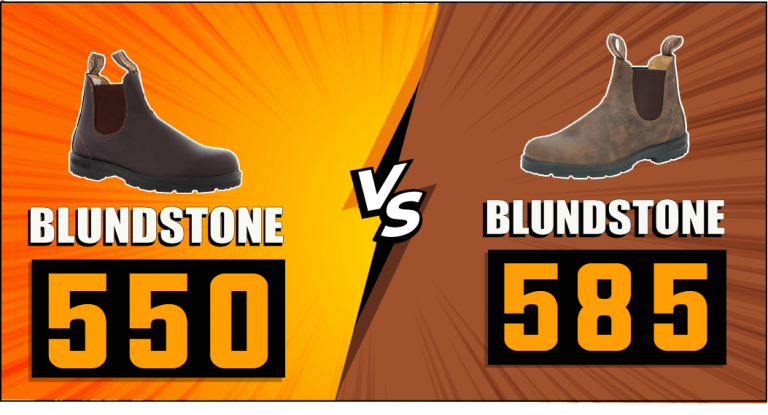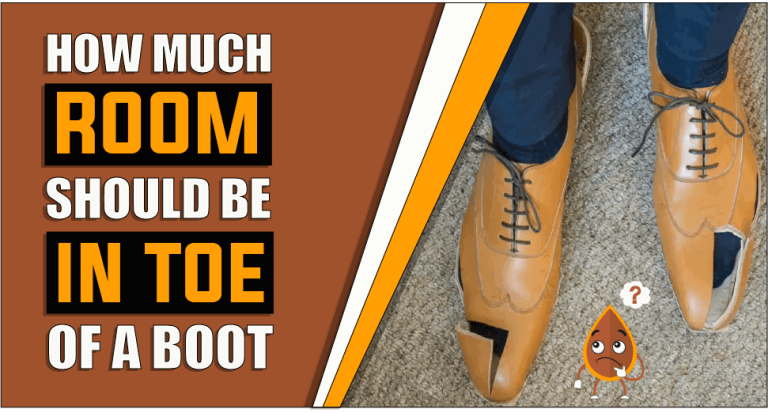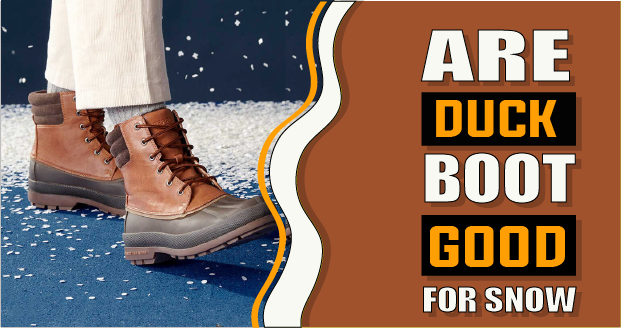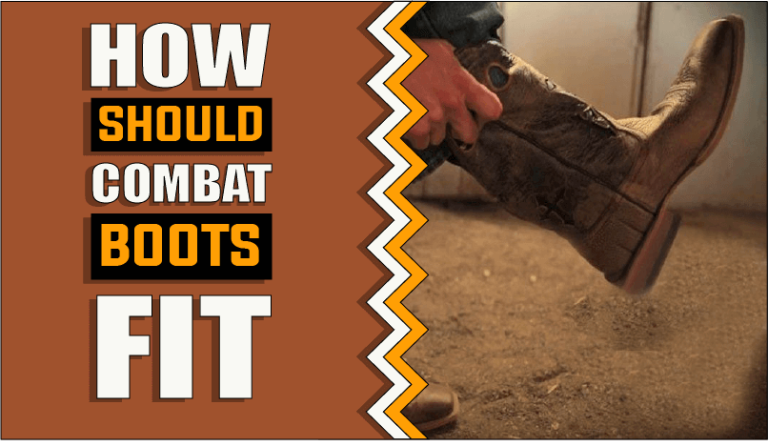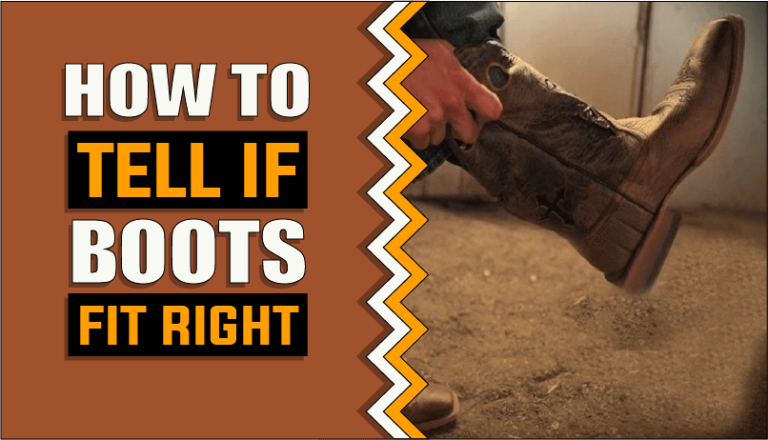What Are Crepe Soles – The Truth Reveals
Boots are a type of footwear that is typically made from leather or other materials such as rubber, plastic, or suede. They cover the foot and the ankle and have a heel that is typically raised. Boots come in some designs, including formal boots, cowboy boots, work boots, and hiking boots. One of the most distinguishing features of boots is their soles. Boot soles are typically made from crepe rubber, which is thick and provides good traction. In this post, we will provide a detailed introduction to crepe soles and explain what makes them unique. We’ll also provide you with some pointers on how to take care of your shoes with crepe soles. So, if you’re looking for a new pair of shoes with a stylish and functional sole, be sure to check out crepe soles!
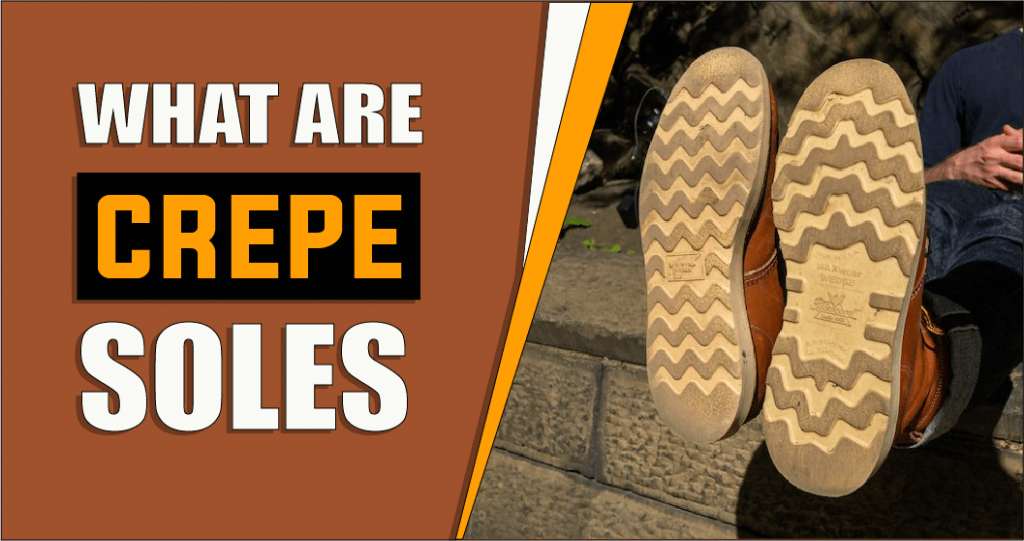
Let’s discuss what are crepe soles?
Crepe soles are a type of rubber sole that is commonly used on dress shoes and other types of formal footwear. The term “crepe sole” comes from the French word for shoe, which is “chaussure.” Crepe soles are characterized by their thinness, flexibility, and durability. They are also known for their distinctive crepe-like texture, which is created by the process of vulcanization. Crepe soles were first introduced in the early 20th century as an alternative to leather soles. At that time, they were considered to be superior to leather soles because they were more comfortable and durable. Today, crepe soles are still widely used in the manufacturing of dress shoes and other types of formal footwear. Crepe soles are typically constructed from many different materials such as natural rubber, synthetic rubber, and fabric. And they also come in a variety of colors, including black, brown, and white. Crepe soles are generally thinner and more flexible than leather or synthetic soles. Therefore, they are more comfortable to wear for longer periods. Additionally, crepe soles are less likely to slip on wet or icy surfaces. However, they might need to be replaced more regularly because they are not as resilient as leather or synthetic soles.
How crepe soles are made?
Crepe soles are created by a process called vulcanization. In this process, the rubber molecules are joined together by applying pressure and heat. This process gives the crepe sole its distinctive texture and also makes it more resilient to wear and tear. The vulcanization process was first developed by Charles Goodyear in 1839. Goodyear discovered that when he heated rubber with sulfur- the rubber became stronger and more resistant to heat and cold. He dubbed this technique vulcanization after the Roman god of fire. Today, most crepe soles are made from a type of synthetic rubber called styrene-butadiene rubber (SBR). When compared to natural rubber, this variety of rubber holds up better and lasts longer. To make a crepe sole, the SBR rubber is first mixed with other ingredients like sulfur, carbon black, and oils. This mixture is then placed inside a mold where it is vulcanized under high pressure and temperature. After vulcanization, the crepe sole is then cut to the desired shape and size. The soles are then usually finished with a layer of latex or PVC to improve their water resistance.
The history of crepe soles?
The crepe sole is a type of footwear that gained popularity in the early 20th century. These soles were made out of a material called crepe, which was a rubber-like substance. The soles were popular because they were very comfortable and provided good traction.
The crepe sole became even more popular during World War 1 when soldiers needed footwear that would be comfortable while marching long distances. After the war, the style became popular with civilians as well.
In the 1930s, crepe soles began to fall out of fashion and were replaced by leather soles. However, they made a comeback in the 1950s, when they were adopted by the Beat generation. Today, crepe soles are once again popular, and are often seen on fashion sneakers and other casual shoes.
Different types of crepe soles?
There are three main types of crepe soles: natural crepe, synthetic crepe, and vulcanized crepe.
1: Natural crepe soles-
As the name suggests, natural crepe soles are made from 100% natural latex. These soles are very soft and flexible, making them ideal for shoes that require a lot of flexibility, such as ballet slippers. These soles are also highly durable and, with proper care, can endure for many years.
2: Synthetic crepe soles-
Synthetic crepe soles are made from a mix of synthetic materials and latex. These soles are not as flexible as natural crepe soles, but they are much more durable. They are also much cheaper to produce, which makes them a popular choice for mass-produced shoes.
3: Vulcanized crepe soles-
Vulcanized crepe soles are made by vulcanizing, or heating rubber to make them more durable. This type of crepe sole is often used in work boots and shoes because it can withstand heavy wear and tear. This type of crepe sole is also resistant to slipping and has excellent traction.
No matter what type of crepe sole you choose, you can be sure that your shoes will be comfortable and long-lasting.
How to care for your crepe soles?
Crepe soles are one of the most popular soles for shoes. They are comfortable and provide good traction. However, they can be difficult to keep clean and free of dirt and debris. Here are some pointers for maintaining your crepe soles:
1. Inspect your crepe soles regularly-
Check your crepe soles regularly for signs of wear and tear. If you see cracks or breaks, you should replace them right away.
2. Keep them clean-
Wipe your crepe soles down with a damp cloth after each wear. This will help to remove any dirt or debris that has accumulated on the soles.
3. Apply a waterproofing spray-
Apply a waterproofing spray to the crepe soles of your shoes before you wear them in wet or snowy weather. This will help to protect the soles from water damage.
4. Store them properly-
Keep your crepe soles in a cool, dry location when they are not being used. Keep them out of direct sunlight and away from moisture, as this can damage the soles.
You can preserve your crepe soles in good shape for many years by following these simple pointers.
How to clean Crepe Soles?
Crepe soles are a type of shoe sole that is made of crepe rubber. They are known for their flexibility and comfort and are often used in dress shoes and other formal footwear. Even though crepe soles are very comfortable, it can be hard to keep them clean. Here are some cleaning guidelines for crepe soles to keep them looking their best.
What do you need?
- A soft cloth
- A toothbrush
- A mild soap or detergent
- Lukewarm water
Instructions-
Step 1: Gather all materials-
To move on to the next stage, you must first gather all the necessary materials. This includes a soft cloth, a toothbrush, mild soap or detergent, and lukewarm water.
Step 2: Brush away dirt and debris-
Next, brush off any dirt or debris that is on the crepe sole’s surface using the toothbrush. Don’t scrub too aggressively since it could harm the delicate material.
Step 3: Make a soapy solution-
In a bowl or container, mix some mild soap or detergent with lukewarm water. Stir until the ingredients are combined. This solution can be used to clean the crepe soles.
Step 4: Soak the soles-
Using the soft cloth, soak up some of the soapy solutions and then apply them to the crepe soles. Ensure that the entire surface has been covered. After that, allow the soles to soak for a few minutes.
Step 5: Scrub the soles-
After waiting a while, scrub the crepe soles with the toothbrush in a circular motion. Pay special attention to any spots that appear to be especially unclean.
Step 6: Rinse away soap and dirt-
After that rinse the crepe soles completely with clean water to remove all signs of soap and grime. Once done, dry them with a gentle towel or let them air dry normally.
Now, you know how to clean your crepe soles, you will find them to be more and more pleasing. They are a great choice as comfortable, stylish footwear. Furthermore, they can be maintained to look brand new with only a little bit of effort and care. Follow these steps and your crepe soles will stay clean and fresh.
Benefits of Crepe sole
There are many benefits to using crepe sole shoes. Some of these benefits include:
1: Traction-
The main benefit is the increased traction that they provide. The crinkled surface of the crepe sole provides more contact with the ground, which gives you a better grip and helps to prevent slipping. Additionally, the crepe soles are very flexible, which makes them ideal for shoes that need to conform to your feet (such as work boots).
2: Comfort-
Another advantage of crepe soles is that they are exceedingly pleasant to wear. The softness of the material ensures that your feet will not feel any uncomfortable pressure points, even when walking for long periods. Additionally, the flexibility of the sole allows your feet to move naturally, reducing fatigue and discomfort.
3. Durability-
Crepe sole shoes are also very durable, thanks to the tough nature of the rubber material. This implies that even with frequent use, you can trust them to last for many years. Furthermore, if you treat your shoes well, they will keep their appearance and comfort for much longer.
4. Resoling:
Another great benefit of crepe sole shoes is the fact that they can be easily resolved when necessary. This means that you won’t have to buy a new pair of shoes every time the soles start to wear down. Simply take them to a cobbler and have the soles replaced – it’s as easy as that!
5. Easy to care-
Another great benefit of crepe sole shoes is that they are very easy to care for. All you need to do is simply wipe them with a moist cloth after every wear to maintain their looks over a long time.
Overall, crepe sole shoes offer some benefits that make them ideal for a variety of purposes. If you are looking for shoes that will provide you with increased traction, comfort, and durability, then crepe soles are a good option to consider.
Drawbacks of Crepe sole?
There are a few drawbacks to using crepe sole shoes. Some of these drawbacks include:
1. They can be difficult to find-
One of the biggest drawbacks of crepe sole shoes is that they can be difficult to find. Not all shoe manufacturers make shoes with crepe soles, so you may have to search around to find a pair that meets your needs.
2. They can be more costly-
Another disadvantage of crepe sole shoes is that they are typically pricier than other types of shoes. This is because they are not as common, so you may have to pay a premium to get a pair.
3. Not appropriate for all activities
While crepe soles offer many benefits, they might not be suitable for all activities. For example, if you are looking for shoes to wear while running, you might want to choose a different type of sole that is designed specifically for running purposes.
4. They might not be suitable for all weather conditions-
Crepe soles can also be a drawback in some bad weather conditions. If you live in an area with a lot of snow or rain, the crepe sole can make it more difficult to keep your feet dry and comfortable.
5. They are not suitable for all types of feet.
Finally, crepe soles might not be suitable for all types of feet. If you have wide or flat feet, you might find them to be not as comfortable as other types of soles.
Overall, wearing shoes with crepe soles comes with certain disadvantages. However, these drawbacks should not deter you from considering them if you are looking for a good all-around shoe.
How crepe soles have evolved over the years?
Crepe soles have evolved and are currently seen in a variety of forms. They are commonly used in dress shoes, loafers, and boat shoes. In addition, they are also available in sandals and sneakers. Crepe soles are known for their comfort and durability.
Some people believe that crepe soles make shoes more comfortable. Because they minimize the friction and can also absorb shock. This means there will be less chance of developing blisters and calluses in a boot with crepe soles. Crepe soles also tend to be more durable than other types of soles.
Crepe soles are offered in a wide variety of colors. They typically come in three classic colors: black, brown, and tan. Additionally, they also come in some rarer colors white, red, and blue. Some people prefer to have their crepe soles in multiple colors. This lets them choose a pair of boots that go well with what they are wearing.
You can purchase crepe-soled shoes online or in stores. Many different brands sell crepe-soled shoes. You can also find crepe soles that are made from recycled materials. And amazingly, the recycled crepe soles are just as durable as new ones.
Crepe soles are an excellent choice for a pleasant and long-lasting sole. They have been popular for ages and are continuing to be so today. And don’t forget that they come in many different materials, shapes, and colors.
Related Questions:
Crepe soles are formed of vulcanized latex, which has been processed with heat and chemicals to make it harder and more durable. This makes them ideal for shoes that will be subject to a lot of wear and tear, such as work boots or walking shoes. Other types of soles, such as rubber or synthetic materials, may not be as durable and can break down more easily. Crepe soles also tend to be more flexible than other types of soles, making them more comfortable to walk in. Meanwhile, they may not last as long as some other types of soles. However, crepe soles are often less expensive and can be replaced more easily.
Crepe sole boots are ideal for those who want a tough, durable boot that can handle any terrain or weather. They’re also perfect for anyone who wants a boot with a bit of personality – the unique crepe sole is sure to turn heads. Whether you’re looking for a new work boot or a stylish addition to your weekend wardrobe, crepe sole boots will prove to be a great option.
No, crepe soles are quite durable and will last for several seasons with proper care. However, it is crucial to remember that they are not suitable for strenuous activities such as trekking or trail jogging. If you do plan on doing any of these activities in your crepe-soled shoes, be sure to inspect them afterward for any signs of wear and tear.
Crepe sole is made of a type of rubber that is known for being both flexible and durable. Which makes it the perfect choice among footwear that must withstand heavy use and abuse, such as those worn by dancers and athletes. They are also popular in dress shoes because they provide a high level of comfort while being elegant and fashionable.
Crepe sole can last for many years if it is properly cared for. However, it will ultimately exhibit signs of wear and tear with time, just like any other type of footwear. But, you can prolong the life of your crepe-soled shoes by storing them in a cool, dry location when they are not in use and by avoiding exposure to extreme heat or sunlight.
Crepe for shoes is a type of shoe construction that uses an adhesive to attach the upper to the sole. This method is often used for dress shoes and other types of shoes that need to be more flexible.
No, crepe sole is not natural. It is made of rubber and other synthetic materials.
Crepe soles are popular in shoes because they are lightweight and flexible. And are typically made with a variety of materials like rubber and leather. In addition, they offer great traction and grip, which makes them perfect for usage in slick or wet circumstances.
We recommend a lightweight and durable material such as EVA or rubber. If you choose a material that is too heavy, it will make your shoes feel uncomfortable and clunky. On the other hand, if you select a material that is too light, it may not provide enough support and protection for your feet. Ultimately, the best sole material for you depends on your personal preferences.
Yes, you can wear crepe soles in winter. However, it is critical to select the proper sort of crepe sole for winter circumstances. For example, a softer sole will provide better traction on icy surfaces than a harder sole.
Yes, crepe soles can get dirty. However, moist cloth and some light soap are plenty to bring back to life and to make them look like new. Furthermore, you can also purchase a commercial suede cleaner to help keep your shoes looking new.
You can take care of a crepe sole by making sure that they don’t get wet and remain clean. Another way to keep the crepe soles clean is with a shoe brush to get rid of existing dirt and debris. If your crepe sole does get wet, you should blot them dry with a clean cloth.
Natural crepe is a type of fabric made from 100% natural fibers. The most common natural fiber used to make crepe is silk, but other fibers such as cotton and linen can also be used. Crepe fabrics have a crinkled or textured surface, which gives them a unique look and feel. Natural crepes are often used for dresses, skirts, and blouses because of their softness and drape.
Conclusion Paragraph:
In conclusion, what are crepe soles? They are a type of rubber sole that is made to be comfortable and durable. They are commonly used in dress shoes, loafers, and boat shoes but can also be found in sneakers and sandals. They have been around for centuries and are still popular today. You can find them in a wide range of styles, colors, and materials. While there are a few potential drawbacks to using crepe sole shoes, they offer many benefits that make them a good choice for a variety of purposes. We sincerely hope that this post helped you understand more about crepe sole.
Ella John created BootsSolution.com with the vision of helping people to find the perfect boots for any occasion. As an expert in the field of footwear, she has created a comprehensive guide to finding the perfect boots. With her BA (Hons) in Footwear Design from De Montfort University, UK, Ella John has been writing about boots for several years. On BootsSolution.com you can find helpful information about the latest trends, tips for taking care of your boots, and advice on how to choose the right pair. Ella’s mission is to provide her readers with the best possible advice and help make sure that everyone can look their best in a perfect pair of boots. So if you’re looking for the information and inspiration you need to find the perfect boots, look no further than BootsSolution.com.

